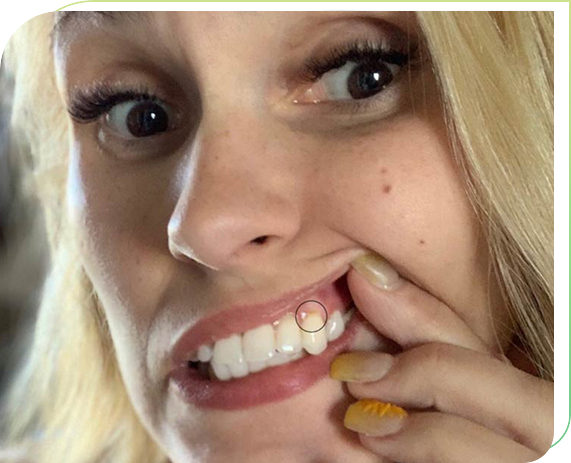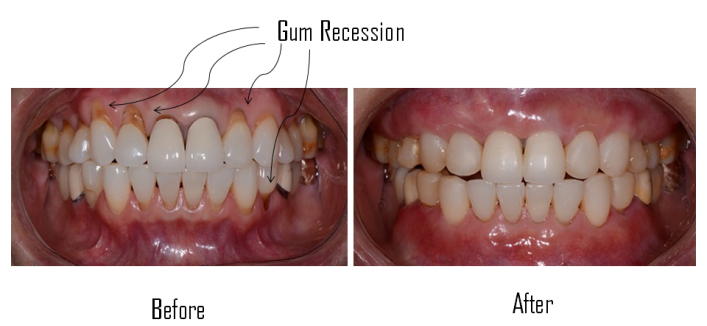Gum Recession Dental Care

 Dental Care
Dental Care
Gum Recession
What is Gum Recession?
Gum recession refers to the loss of gum tissue along the gumline. This can occur as a result of periodontal disease (gingivitis, periodontitis, advanced periodontitis), the natural aging process, or abrasive habits when it comes to brushing the teeth.
This can occur as a result of periodontal disease (gingivitis, periodontitis, advanced periodontitis), the natural aging process, or abrasive habits when it comes to brushing the teeth.
Why should gum recession be taken seriously?
When gum recession occurs, the root structure of the tooth becomes exposed. This means that tooth decay and other problems can affect the teeth along the gumline and beneath it. Since healthy gums are essential for a healthy mouth, getting gum recession treated is important for lasting dental wellness.
The gum Recession occurs slowly. If you notice your teeth starting to look longer, or you often experience tooth sensitivity to hot or cold food and drinks, your gums may be receding.
What causes Gum Recession?
An aggressive oral hygiene technique, grinding or clenching your teeth or the unusual forces caused by misaligned teeth and Gum Disease are common cause of Gum Recession.
Treating Receding Gums?
Keeping up regular professional cleaning to remove heavy calculus is the first step to treating receding gums. You may require a deeper clean, scaling and root planing to remove plaque and calculus build-up from the root surfaces of your teeth. Keeping your teeth healthy and clean help your gums to heal and prevent recession.
If your gums have recessed more extensively, Dr Jack may recommend a Surgical Gum Treatment.
Preventing Gum Recession
It is much simpler and less expensive than a surgical gum treatment. Brushing regularly will help to reduce dental plaque and Gum Disease, and is a key to preventing Gum Recession.
Disclaimer: Any surgical or invasive procedure carries risks. Before proceeding, you should seek a second opinion from an appropriately qualified health practitioner


